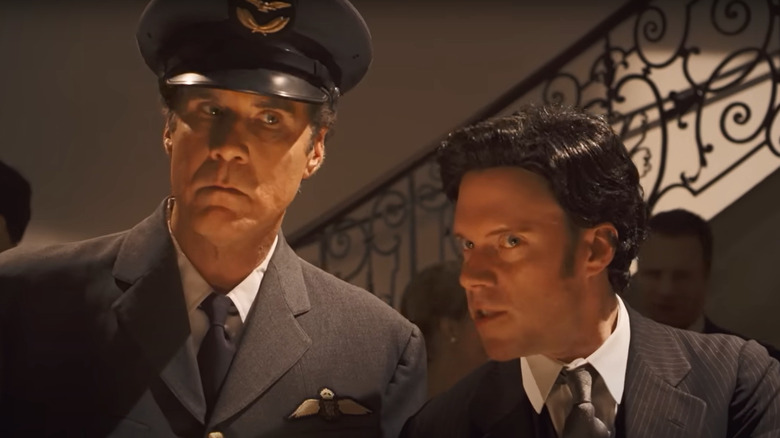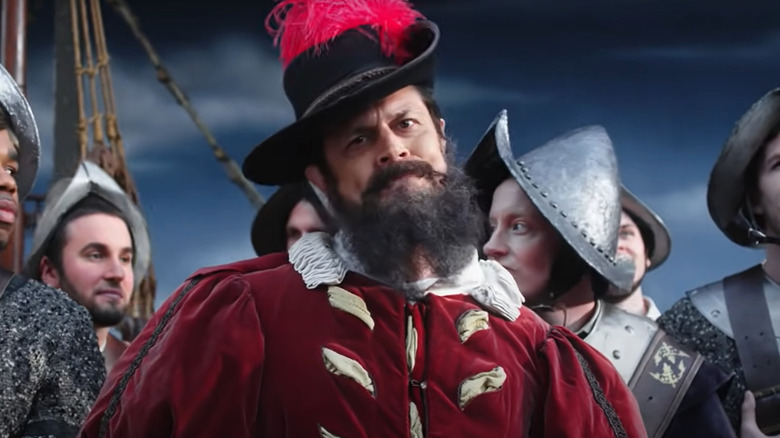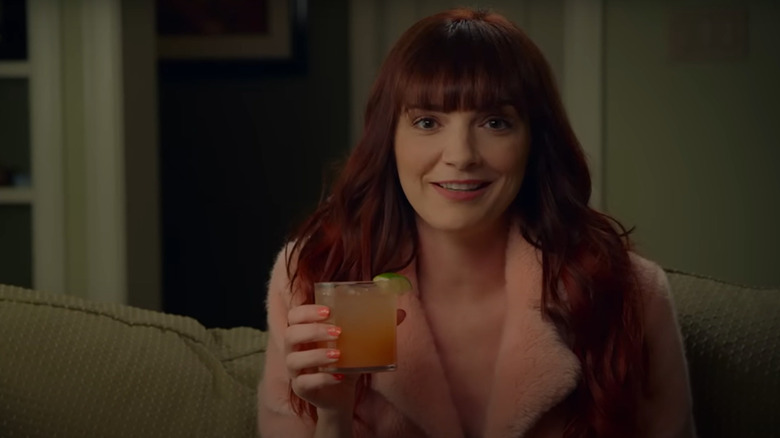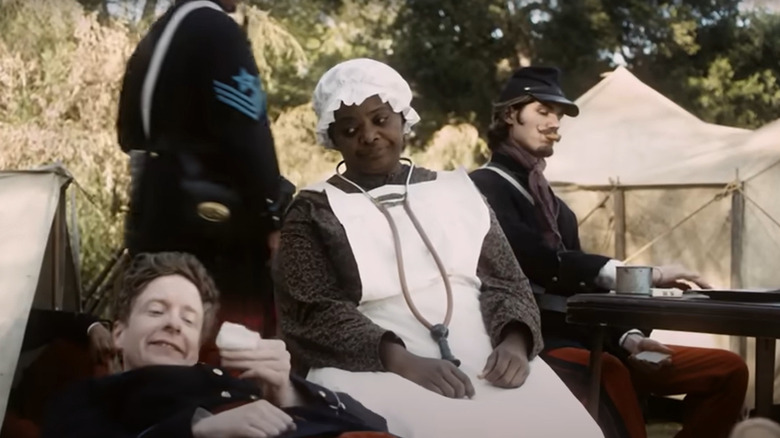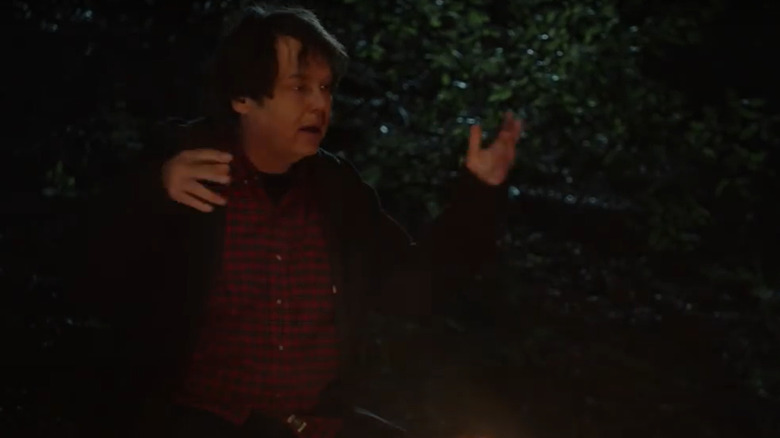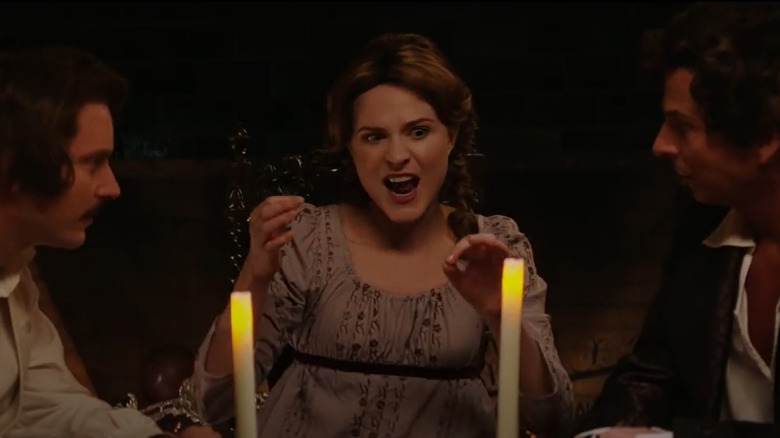Rules Stars Had To Follow For Drunk History
On paper it might be a bit of a head-scratcher: "So, you get some comedians/writers/narrators wasted and have them tell a historical story, and then actors lip-sync it and act it out?" Yes, indeed. What began as a tiny, Derek Waters-led web series on Funny or Die from 2007 to 2011 took off in a big way when Comedy Central ordered an initial eight-episode run in 2013. "Drunk History: ran for 87 episodes over seven seasons and got canceled at the top of its game simply because Comedy Central decided to shift away from live action and toward animation. But hey, at least we got to see Weird Al play Adolf Hitler.
But despite its silly exterior, "Drunk History" had a pretty legit methodology. Historian Callison Stratton said it best in her paper on the show (via Smithsonian Magazine): "In their state of lowered inhibitions, the narrators present a story that is influenced more by their own emotional connection to it than is tethered to a desire to tell the 'truth.'" In other words, "Drunk History" wasn't just a dull recitation of academic facts, but something closer to oral fireside storytelling. The narrators loosened up and provided the comedy, while the actors played the proverbial "straight men" in scenes resembling improv more than anything.
Of course, it wasn't all fun and games. Narrators and actors were both the stars of the show, and both had guidelines to follow. Actors had to try and actually act, stay sober, and keep their lip-syncing on point, while narrators had to get truly trashed and tell a charismatic story.
Actor rule: No drinking
While the narrators who recited their "Drunk History" tales were encouraged to do exactly as the title of the show says — get drunk — the show's actors had to remain stone-cold sober. That's not to say they couldn't take a secret swig from a boot flask around a corner on-set or something. But matching lip movements to the timing of a drunk person? That requires a high level of sobriety. And it's this exact mismatch of sober/drunk, orchestrated/improvised, and famous face/semi-known voice that helped make the whole show work.
Not that there weren't some alcohol-related nuances to actors' performances. There was a real, behind-the-scenes craft to "Drunk History," which followed much more of a structured formula than folks might realize. In an evaluation of actors acting drunk in various movies for Fast Company, showrunner Derek Waters revealed what he believes is the secret to the craft. "When someone is pretending to be drunk, the goal should be to pretend to be a drunk person trying to be sober," he said. In other words, the goal was realism — not hamming it up.
As for when actors could drink, and Waters' take on the relationship between alcohol and creative ventures in general, he reckoned alcohol should come last. "Alcohol is nice to celebrate when you finish your vision," he told Vulture. "It should be the ending, not the beginning."
Narrator rule: Lots of drinking
While the actors of "Drunk History" got to have fun in front of the camera and draw viewers to the show, nothing would have worked without the narrators bringing the show's stories to life. "They deserve all the credit in the world," Derek Waters said in an interview with Vox. "There'd be no show without them." Narrators had to get drunk, but with a whole lot of alcohol-related guidelines to steer things in the right direction.
First off, narrators were encouraged to avoid alcohol that makes them sick, no matter that hangovers were all but guaranteed because it typically took five to six hours of footage to condense things into a little 10-minute skit. Sometimes, no matter the quality of the narrator or their telling of a tale, folks got irate or annoyed that they couldn't remember things well. This meant that Waters often got "an apologetic email" on the second day of filming, as he told Esquire — on top of the hangovers.
In order to make things smooth and not make narrators feel exploited, Waters drank with them, narrators took breaks, they filmed in their own homes, and there were medics on hand with implements like oxygen tanks for safety purposes. But no matter all the caveats, drunkenness was still the rule of the day.
Actor rule: Tell real history no matter the comedy
While certain "Drunk History" actors were naturally funnier than others and lent a comedic element to scenes, "Drunk History" worked best when actors actually acted — just not too much. Or as showrunner Derek Waters said on Esquire, the sneaky purpose of the show wasn't just to entertain, but to educate as well. "We're trying as hard as we can to make a real history show," he explained. "If you can make people laugh I think you can do a lot of things," he noted, including "making things relatable." The brunt of the comedy in "Drunk History" comes from the narrator's drunkenness. But in order for this comedy to come out, actors had to tell a largely straight-faced story. They had to keep faithful to the narration and not distract from it.
Take Season 3, Episode 4 of "Drunk History," the one featuring award-winning actress Octavia Spencer playing legendary underground railroad figure Harriet Tubman. Narrated by comedian Crissle West, this segment talked about a serious topic worthy of serious consideration — real history, in other words. Spencer added some comedic inflection to her performance, but she basically played the role like a non-comedic film or TV show. It isn't hard to see how if Spencer hadn't treated things seriously, she would've done a disservice to both the story and narration. This is just one example of a rule that actors followed, either implicitly or by direction: Treat it like a real story.
Narrator rule: Tell a story, not facts
Next up we've got another rule that might seem like a no-brainer, but probably wouldn't have happened without the alcohol guiding "Drunk History's" loosened-up narration: Tell a story. Anybody could read about a historical event and sift through a litany of tedious terms and dates, but that kind of approach often leaves people cold. This is why "Drunk History" worked, regardless of the alcohol. Like we said, it was something closer to fireside storytelling than a lecture.
In order to tell a story, Derek Waters had to play a careful game with each narrator. He was very selective about his orators — he knew most of them before he reached out to them and was familiar with what kind of stories they'd gravitate towards. He'd hone in on people who were comfortable on camera and who were a combination of smart and charismatic — the latter was critical because sometimes alcohol makes people unlikeable. Also, narrators had to tell a true story with a beginning, middle, and end. Waters would pass along three or four stories two or three weeks ahead of time so they had a chance to learn them.
This whole setup worked thanks to "Drunk History's" secret sauce: Waters himself, who guided the whole storytelling process. "I guess I'm a drunk whisperer, in a way," he told Vox. "Drinking with them and knowing what to say and what not to say."
Actor rule: Lip-sync as closely as possible
This last rule might be another obvious one, but the comedy of "Drunk History" hinged on the show's stars lip-syncing narrators as closely as possible. If this didn't happen, and a narrator's words didn't look like they were coming from the actor on-screen, then the series wouldn't have worked. It's the weird, drunk rhythm of speech that made the actors' delivery of lines funny. And arguably, it's those actors who lip-synced as closely as possible who were most successful in their roles.
Take Evan Rachel Wood, who played Mary Shelley, author of the groundbreaking 1818 book that's been long-transformed into a household name: "Frankenstein." Wood's Season 6, Episode 1 portrayal of Shelly is largely lauded as one of the show's finest performances because her lip-syncing is spot-on. Not only does she nail it, but she nails some tough, fast lines narrated by Rich Fulcher. Case in point: "He went into the morgue and took body parts — arm, elbow, knee, nose, eyes, head — and put them together in his own special way. Like a Mr. Potato Head, only it was a Mr. Humanoid-o Head." While we don't know how much practice Wood got, we're sure that it would take the average person some serious hours to land those lines.
